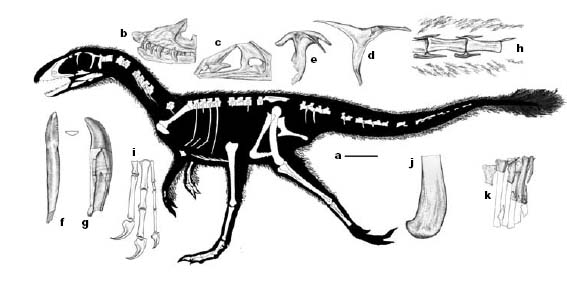
Tyrannosauroids, which roamed the Earth about 85 million to 65 million years ago, are one of the last and the most successful large-bodied predatory dinosaur groups. Although considerable studies have been conducted, their early history remains poorly understood. A recent discovery by CAS researchers has thrown new light to the studies into their ancestor.
As reported in the Oct. 7 issue of
Nature, a research team headed by Prof. Xu Xing from the CAS Institute of Vertebrate Paleontology and Paleonanthropology (IVPP) and their Chinese and US colleagues have unearthed a fossil skull and other fragments of a 130 million-year-old dinosaur with clear impressions of lacy, feather-like filaments in northeast China's Liaoning. Studies into these unusually well-preserved fossils have shown that they belong to the earliest known ancestor of
Tyrannosaurus rex, offering the first direct fossil evidence that tyrannosauroids had protofeathers.
The new dinosaur has been christened
Dilong paradoxus. Dilong means a emperor dragon. "We added
paradoxus to its name because it's so counter-intuitive to think of feathers and a Tyrannosaurus together," says Mark Norell, a co-author of the research paper from the American Museum of Natural History.
"We have a lot of feathered dinosaurs now, so that was not so exciting," says Xing Xu, the lead author of the paper. "Then we realized we had a feathered tyrannosaur," he continues "That was exciting."
The jackal-sized Dilong was far smaller than
Tyrannosaurus rex, but had a broad, square skull and powerful jaws. The protofeathers, according to experts, would most likely have been used for insulation rather than flight. The giant Tyrannosaurus rex had probably lost the featherlike features of its predecessors because, with its much larger size, it would have had more difficulty losing heat rather than keeping it.





